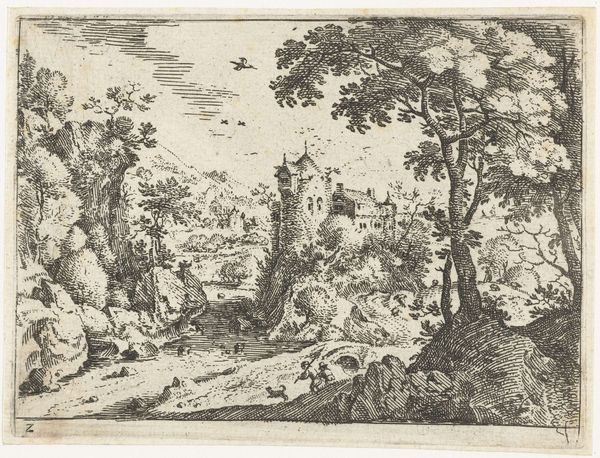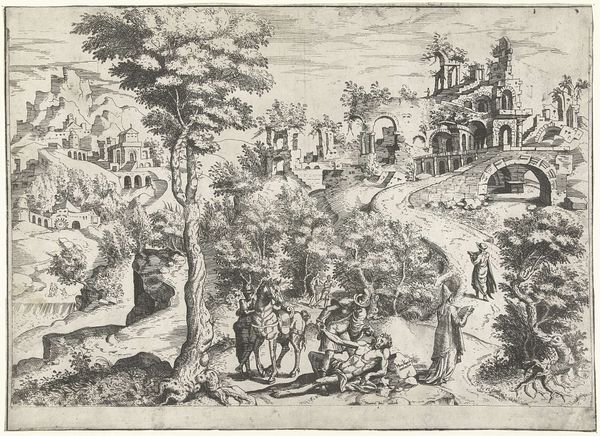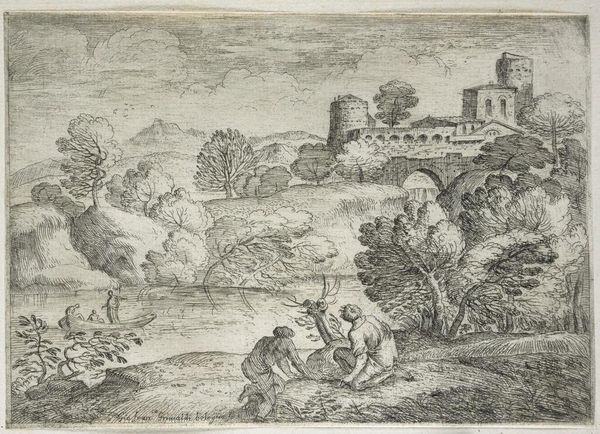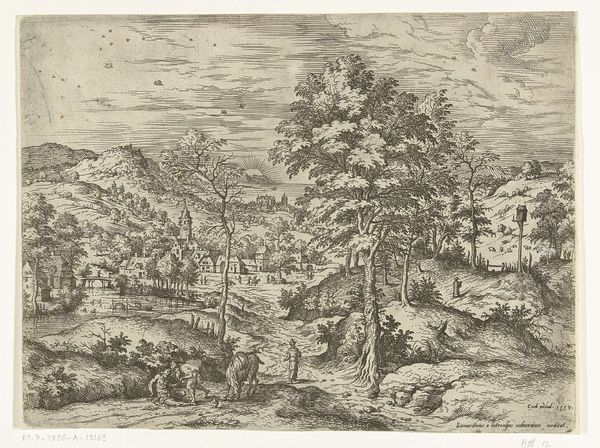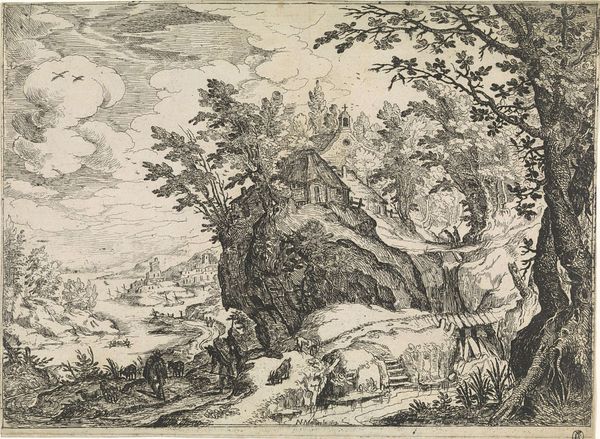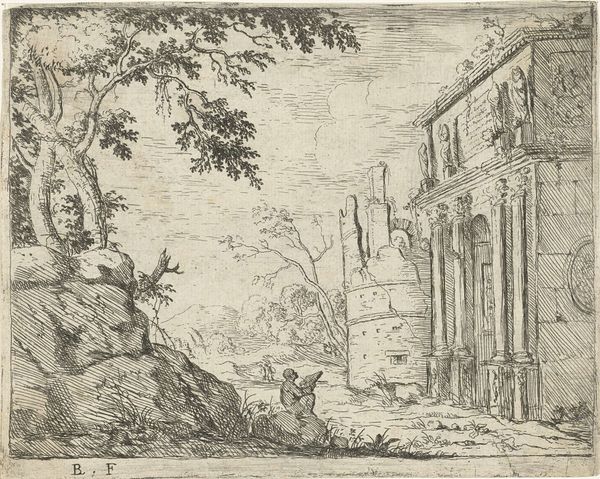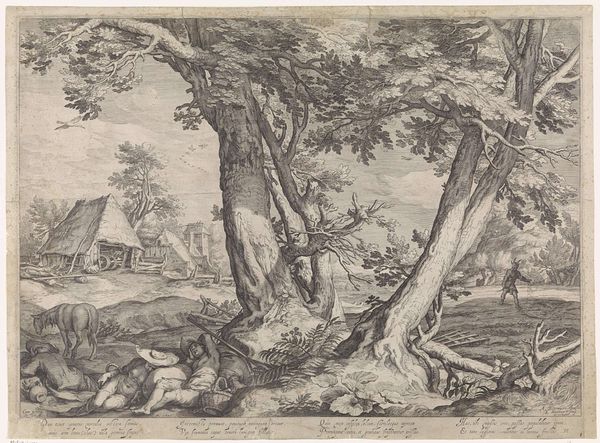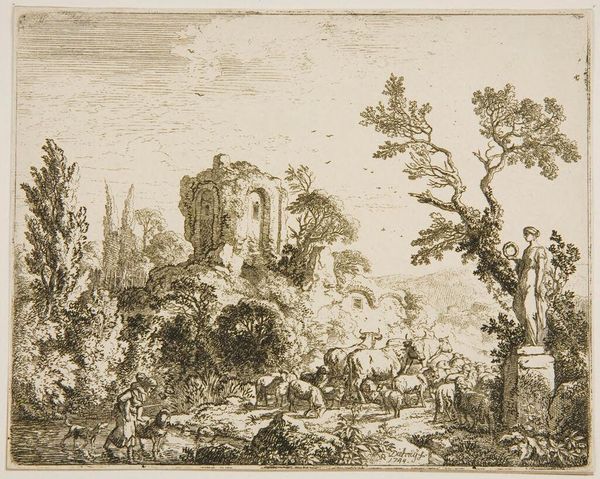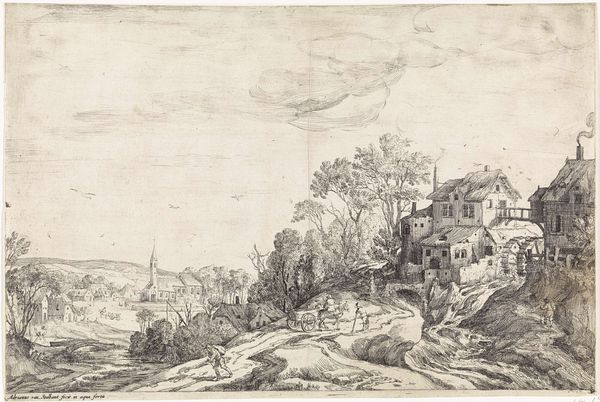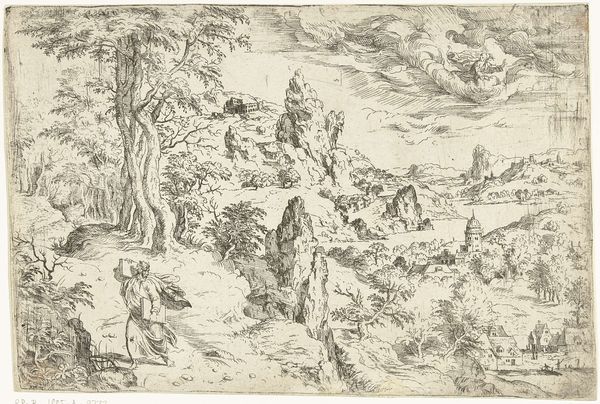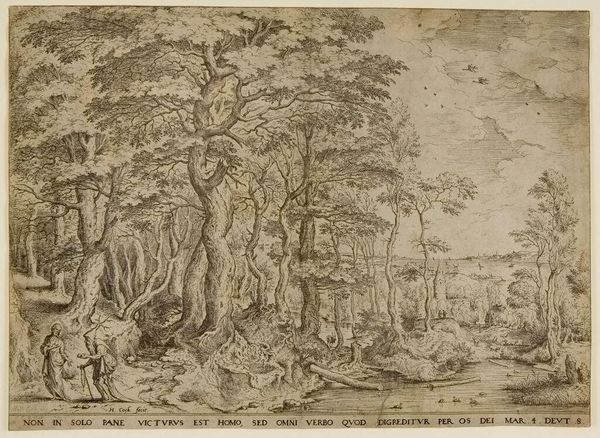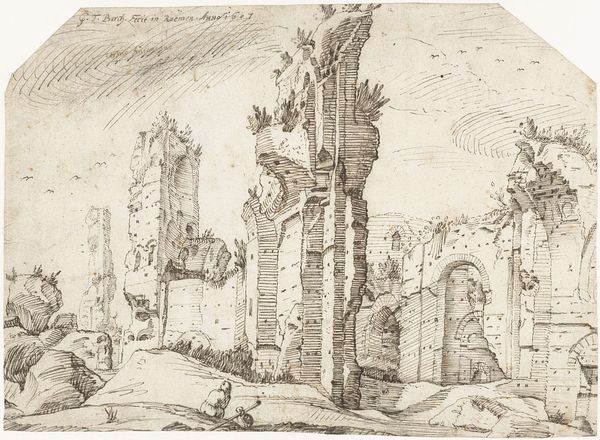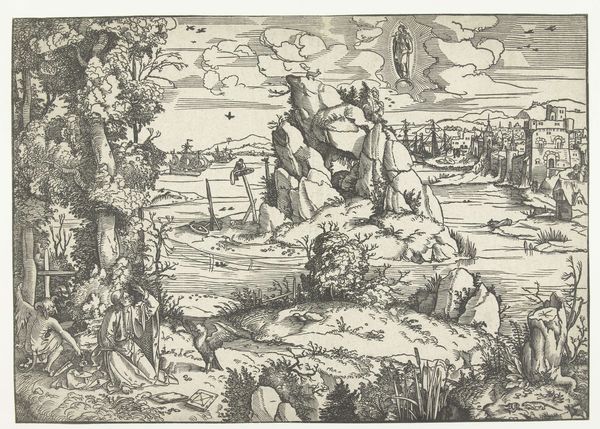
print, etching
#
baroque
# print
#
etching
#
landscape
#
figuration
#
genre-painting
Dimensions: height 218 mm, width 300 mm
Copyright: Rijks Museum: Open Domain
Curator: This etching, titled "Landschap met de barmhartige Samaritaan," or Landscape with the Good Samaritan, created sometime between 1600 and 1800 by an anonymous artist, offers quite a powerful visual narrative. Editor: My immediate response is one of stark contrast—between decay and compassion. The ruined architecture to the left evokes a sense of historical weight, almost abandonment. The stark details in the Samaritan's act of care feel intimate, even radical, given the setting. Curator: Absolutely. Considering the socio-political landscape of that time, the image of a "Good Samaritan" becomes exceptionally poignant. Who is deemed worthy of compassion? Whose suffering is recognized, and whose is ignored or even actively created by social structures? It urges us to consider marginalized individuals and their treatment, both historically and in our present society. Editor: I’m struck by the symbolism within the natural elements. Notice how the gnarled, old trees frame the Samaritan and the injured figure. These trees could be interpreted as symbols of endurance, or even silent witnesses to the ongoing drama of human kindness versus cruelty throughout history. Curator: And we can't overlook the formal qualities reinforcing the thematic implications. The use of etching lends itself to rendering intricate details. How this impacts representation is key here; it highlights inequalities in representation and challenges the viewer to interrogate what constitutes empathy within diverse societal contexts. The technique actively highlights detail that contributes to these social considerations. Editor: Right, the details amplify the emotional gravity. Think of the positioning of the figures themselves, or the man perched on the bridge in the mid-ground. One walks away while another pauses to look at those in distress; is that their conscious weighing the values of indifference against human concern? What might those poses be conveying? Curator: Exactly. Those nuanced, expressive figures challenge assumptions, urging greater compassion and fostering understanding among individuals from differing backgrounds. It offers a space to analyze the nuanced expressions of moral choice during this era of genre-painting. Editor: It seems that it all comes down to the cultural understanding of moral imagery, in that epoch. From this perspective, and when applied in our time, one should be motivated towards collective compassion within current geopolitical tensions. Curator: Agreed. Analyzing this anonymous piece truly prompts a thorough introspection. Editor: And provides a meaningful way to contemplate on symbols of moral conduct, while reflecting on historical inequalities.
Comments
No comments
Be the first to comment and join the conversation on the ultimate creative platform.
